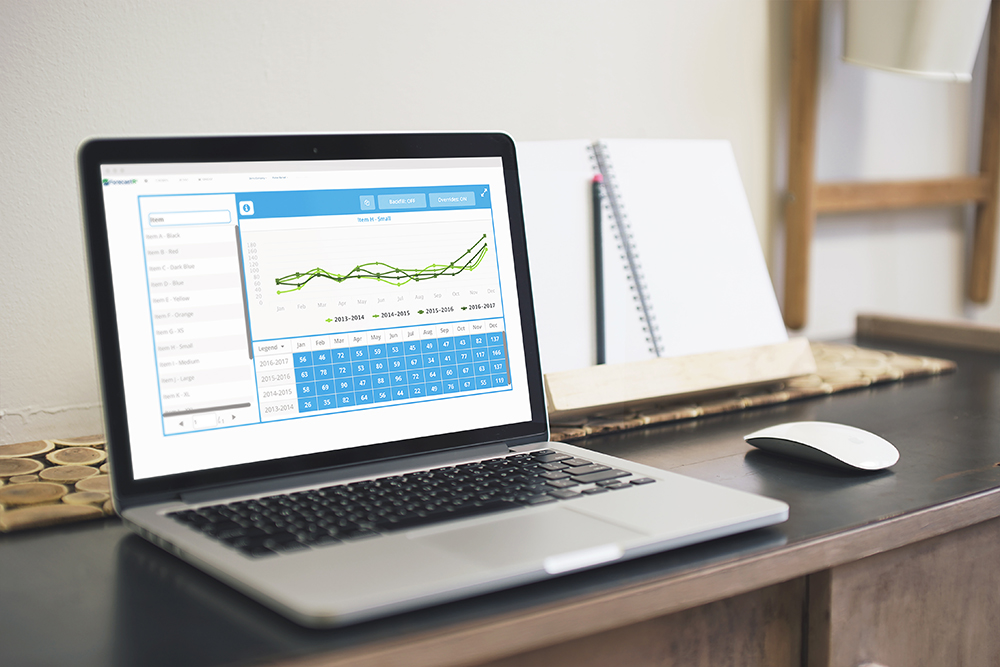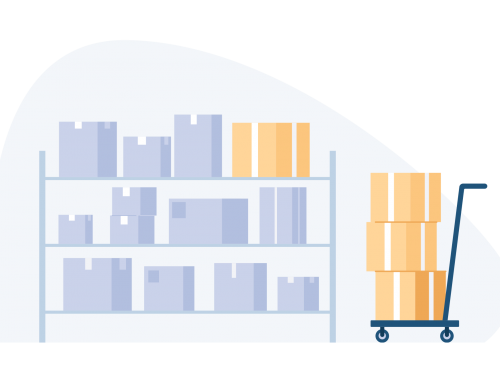Proper inventory control and management are essential for taking your dollar as far as it can go.
Running out of stock, carrying too much stock, or just not knowing what stock you have and where it is—these are all symptoms of poor inventory control or management, and they all reduce your profitability.
As with any other problem, you’re better off preventing it than you are trying to fix it once it has already occurred. Demand forecasting assists with inventory management by projecting how much of an item you’ll need to order—before you need it. But like the rest of your business, you want to get the best results you can out of your forecasts. To get the best, you have to put in the best. That’s why preparing your data before forecasting is often the most crucial, yet overlooked, step of your inventory management process. Faulty input data will lead to faulty results, even if you’re using the best forecasting models.
To help you get your data to work for you, we’ve come up with 3 tips for data preparation.
1. Remove data anomalies
Your data will provide the most accurate forecast when it is most representative of your actual product demand. Anomalies in your historical sales figures skew your data and threaten the reliability of your predictive analytics.
The main culprits to watch out for here are demand spikes due to product promotion campaigns. If these promotions aren’t going to be a regularly recurring part of your sales strategy, you need to smooth out any bumps in data they might create. You can do this by replacing the spike with an average of the sales data of the surrounding months (e.g. you can smooth out an anomaly in June by averaging May and July, as long as the product’s demand isn’t strongly affected by seasonality during these months).
The same goes for demand dips caused by external factors that won’t affect your sales long-term. If it’s not representative of how the product actually performs, that data should be adjusted.

2. Remove out of stock data points
While not so much an anomaly as a tragedy, stock-out periods are data points that should also be removed from your forecast calculations. There are two ways an out of stock condition can affect your monthly data, and you should resolve each a little differently.
For out of stock periods that only last for part of a month, you can simply extrapolate the average sales figures for whichever periods the product was in-stock that month. Use that average number to fill in data points for the stock-out period. Just like that, you’ve patched up the gap!
However, if the product is out of stock for the entire month, then you’ll need to use a similar tactic as with an anomaly. You can fill out the out of stock month with an average of data from the surrounding months, or (if available) you can use data from the previous year.

3. Consider growth trends and seasonality
Before forecasting, it is useful to determine your growth trends—either year-to-year or month-to-month depending on your available data and the period you’re forecasting for. Knowing the overall trajectory of an item’s sales can help you adjust your data in missing or faulty demand months. If you rely purely on overall averages, your data may be skewed and thus lead to inaccurate forecasts.
You’ll want to account for seasonality’s effect on sales rates, too. Using January’s average to cover a stock-out in December will throw off seasonality forecasting for a popular holiday item. Instead, look at data from previous years’ seasonal spike, then adjust with recent growth trends. In the case of a seasonal item, you’ll want to use forecasting models that specifically take seasonality into account when making projections (a topic that we’ll be discussing in a future article).
Depending on the predictive analytics software you are using, adjusting your data can be difficult or simple. A forecasting tool like ForecastRx allows for click-and-type data manipulation, which will let you quickly fix data points and spend more time taking advantage of your forecast results.
To show how convenient ForecastRx makes data manipulation—and the effects data optimization can have on your forecasts—we’re offering a free trial of the program that will allow you to test out all of the tips mentioned here!






